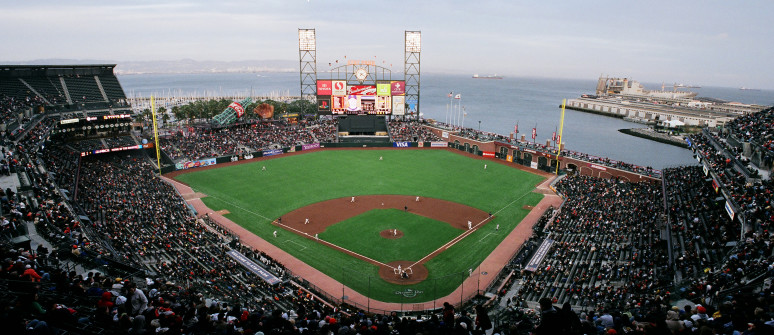One of the key factors that amateur bettors routinely forget to check is the weather. Knowing the temperature and the direction the wind is blowing can drastically improve your baseball betting.
Those that do look at the weather, typically only use it to determine whether a game might go over or under the total, but it can also be useful when predicting who will win the game.
Effects of Weather on Baseball: Pressure, Humidity, Temperature & Wind
There are four key factors to take into consideration: air pressure, humidity, temperature, and wind. I’m going to go into detail on how each of these elements can affect baseball and how you need to incorporate that into your handicapping.
Pressure
The lower the air pressure the farther the ball will carry, as the air is less dense. This is why you almost always see high-scoring games in the low (thin) air at Coors Field.
The higher the altitude the thinner/lower the air. A player could hit a ball 400 ft to dead center in a game being played at Miami’s Marlins Park (close to sea level) and it would typically result in an out (422 ft to dead center).
That same player could hit the ball the exact same at Coors Field and it would travel close to 430 ft, which would result in a home run (415 ft to dead center).
This isn’t something you need to worry about on a daily basis, but you can see how it can change the outcome of a game.
Temperature
Most of you are well aware of the fact that the ball travels better when the temperature rises. Once again this is because the air becomes less dense the hotter the temperature.
It’s a big reason why we see so many low-scoring games early in the season and a huge spark in offense once the warm summer months come around.
Humidity
While the air is less dense on a humid day, there’s actually a reverse effect. The baseball in a game being played on a humid day will actually become heavier and less elastic, causing it to not travel as far.
It’s very similar to when it rains. The moisture causes the ball to be heavier thus keeping it from traveling as far.
Wind
In my opinion, this is the most important element of them all. The way in which the wind is blowing can turn any ballpark into a pitcher’s nightmare or a hitter’s worst enemy.
Knowing which direction the wind is blowing relative to the layout of the ballpark is something you simply can’t overlook.
The effects of wind are greater than you think. For example, if the wind is merely blowing 15 mph towards center field, a normal 400 ft shot off the bat would suddenly travel 445 ft. As you can see, a simple 15 mph wind can have a bigger impact than playing a game at Coors Field.
Tip to Use When Handicapping Weather in Your MLB Betting
It’s pretty self-explanatory how you would take into account these elements when predicting whether a game was going to go over/under the total, but you can’t just look at the weather.
One of the key things that you are going to want to start checking more regularly is whether the starters typically produce more fly ball or ground ball outs.
Say you had a fly ball pitcher vs. a ground ball pitcher in a game where the wind was blowing 15 mph straight out to center field. It should come as no surprise that the ground ball pitcher has a huge advantage.
This is where you can find some great value on the money line. For example, if the ground ball pitcher is the No. 4 starter on his team and the fly ball pitcher is the ace of his team’s staff, more than likely the ace is going to be favored despite the fact that he’s actually at a disadvantage.
Learn More:

